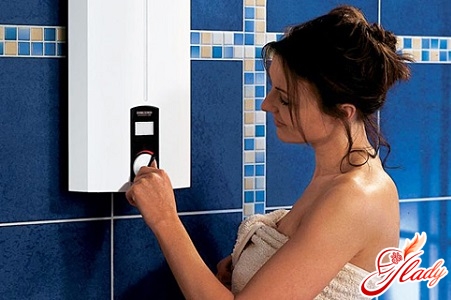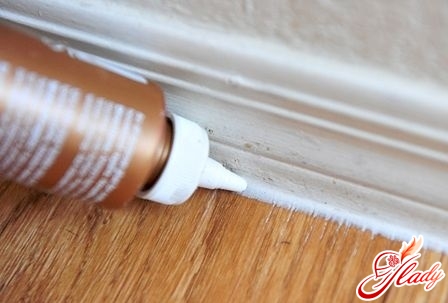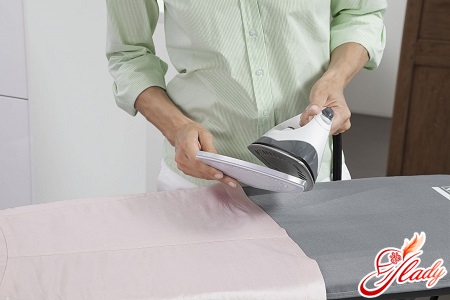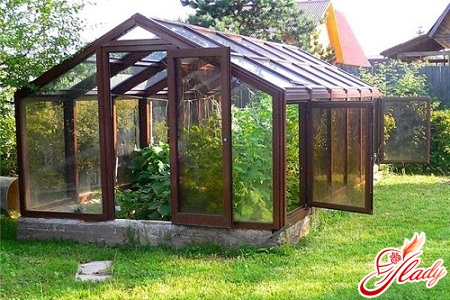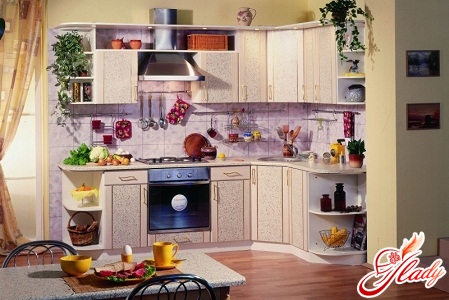 "He pulls and pulls, but can't pull it out."I really don't want this saying to become a suitable characteristic for a kitchen hood, which is designed not only to decorate the interior (as some believe), but also to fulfill its direct purpose - to clean the air in the kitchen. How to choose a hood for the kitchen? Which model to choose? What to be guided by when choosing? Let's try to figure it out.
"He pulls and pulls, but can't pull it out."I really don't want this saying to become a suitable characteristic for a kitchen hood, which is designed not only to decorate the interior (as some believe), but also to fulfill its direct purpose - to clean the air in the kitchen. How to choose a hood for the kitchen? Which model to choose? What to be guided by when choosing? Let's try to figure it out.
Range of hoods
All kitchen hoods can be divided intoseveral types depending on their shape and type of installation. Flat hoods (suspended) are mounted on the wall directly above the stove. Such hoods are a separate structure without an outlet to the ventilation. The suspended hood module consists of a housing, a fan and a filter. The advantages of these models of hoods are low price, stylish appearance, ease of installation. Disadvantages (well, how could it be without them!) of suspended hoods are high noise level, low suction power, the need for frequent replacement of grease filters. Built-in hoods are mounted above the stove in a special hanging cabinet that hides the exhaust pipe. A built-in hood can fit completely in a “masking” cabinet, but can also have a pull-out panel. However, the hood becomes visible only during operation. This type of hood is considered to be of higher quality compared to suspended models, but the price of built-in hoods is significantly higher. However, if the ventilation hole in the kitchen is too far from the stove, built-in hoods will solve this problem. Dome (chimney) hoods. This is probably the most modern type of kitchen hood models. They fit perfectly into the interior of any kitchen, they have a fashionable and even ergonomic design and do not require replacing filters. These models of kitchen hoods can be completely metal, or they can have various inserts and finishes made of glass and wood. According to the installation method, they can be wall-mounted or island (mounted to the ceiling). Dome hood models differ not only in size, shape and color. They also have different technical characteristics. Despite the fact that this type of hood is the most expensive, it is also the most common. Most likely, this is due to the excellent quality of these models, and high power, and the ability to remotely control. However, when choosing one model or another, it is worth considering not only the features of its appearance and compliance with the general style of the kitchen, but also technical parameters: power, noiselessness, durability,
Capacity and productivity of extracts
Kitchen hood performance –the amount of air it can clean per hour of operation. Naturally, the higher the power of the hood, the higher its performance. However, very powerful hoods do not necessarily have to be placed, for example, in a small kitchen. How to calculate the required power for rooms of different sizes? This can be found out by multiplying the volume of the kitchen by ten (to find the volume, multiply the area of the room by the height of the flows). So, for example, for an average kitchen (8 square meters) of an ordinary city apartment (ceiling height 2 m 70 cm), a hood with a capacity of 216 m3 / hour is quite suitable. We got this power by multiplying 8 by 2.7 and by 10. However, the number obtained as a result of such calculations is the minimum indicator. Ideally, the performance of the kitchen hood should be no less than 600 m3 / hour.
Noise level of hoods
The higher the performance of the hood, the more powerfulit has a motor, and the louder the hood itself works. However, for comfortable work in the kitchen, unnecessary noises (especially loud ones) are not at all desirable. Therefore, you need to choose a hood that would not distract the hostess with its noise. However, modern models of kitchen hoods (even quite powerful ones) are equipped with anti-vibration pads and noise-absorbing blocks, which solve the problem of excessive noise when the hood is operating. Nevertheless, when choosing the model you like, check its sound volume in operating mode.
Hood filters
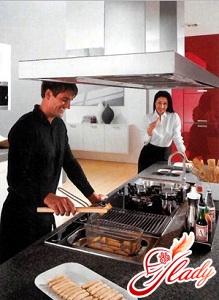 The types of filters in a kitchen hood vary greatlydegrees affect its service life and the quality of its work. If the filter is of high quality, it can neutralize almost all unpleasant (and pleasant too!) odors, and along with them soot, carbon and grease suspension in just five minutes. To choose a kitchen hood with a high-quality filter, you need to know that they can have only two types of filters - coarse filters and fine filters. Coarse filters are also called grease (grease trap) filters. They are designed to catch and retain even the smallest particles of fat that get into the air during cooking. Moreover, the filter in the kitchen hood not only cleans the air, but also protects the engine and the inner walls of the air purifier, which significantly extends the service life of the hood. Grease filters can be made of metal, acrylic and non-woven fabric. Metal filters are reusable. For good operation, it is enough to wash them at least once a month. Grease filters made of non-woven fabric and acrylic are disposable. That is, after the filter gets clogged with dirt and grease, it is simply thrown away and replaced with a new and clean filter. Fine filters are called carbon filters, since they use activated carbon. The main purpose of fine filters is to capture and neutralize (adsorb) odors. These filters are replaceable and the frequency of their replacement depends only on the intensity of use of the kitchen hood.
The types of filters in a kitchen hood vary greatlydegrees affect its service life and the quality of its work. If the filter is of high quality, it can neutralize almost all unpleasant (and pleasant too!) odors, and along with them soot, carbon and grease suspension in just five minutes. To choose a kitchen hood with a high-quality filter, you need to know that they can have only two types of filters - coarse filters and fine filters. Coarse filters are also called grease (grease trap) filters. They are designed to catch and retain even the smallest particles of fat that get into the air during cooking. Moreover, the filter in the kitchen hood not only cleans the air, but also protects the engine and the inner walls of the air purifier, which significantly extends the service life of the hood. Grease filters can be made of metal, acrylic and non-woven fabric. Metal filters are reusable. For good operation, it is enough to wash them at least once a month. Grease filters made of non-woven fabric and acrylic are disposable. That is, after the filter gets clogged with dirt and grease, it is simply thrown away and replaced with a new and clean filter. Fine filters are called carbon filters, since they use activated carbon. The main purpose of fine filters is to capture and neutralize (adsorb) odors. These filters are replaceable and the frequency of their replacement depends only on the intensity of use of the kitchen hood.
Modes of operation and ways of control
Modern kitchen hoods are capable of workingin any of the two modes - air exhaust mode and recirculation mode. There are also models that combine both hood options. These modes differ significantly in their operating principle. When a kitchen hood operates in exhaust mode, it takes air from the room and discharges it outside through ventilation. The filters installed in such models primarily protect the internal mechanism of the hood from grease and dirt, but do not clean the air. The recirculation system takes in air, cleans it with filters and releases it back into the room. It is in hoods with a recirculation system that grease traps and additional filters operate, cleaning the air from grease, soot, carbon and dust. However, most modern hood models are capable of operating in any of these modes, which means they are suitable for any kitchen. Therefore, the question of how to choose the right hood for the kitchen depending on the air purification method is no longer so relevant. For many housewives, an important factor in choosing remains the method of controlling the hood (on-off). This is understandable, since any hood (even the most complex model) should be easy to operate. The most common types of hood control:
- electronic - light board or LED indicators;
- push-button - pseudo-sensor buttons that activate or deactivate various functions of the hood;
- slider - a mechanical slide switch located at the base of the hood.
There is no fundamental difference between all these methods.There is no control, so there is no need to talk about any advantages or disadvantages. Focus on your own habits and ideas about convenience.
Additional functions
In addition to its main function – purificationair – kitchen hoods are often equipped with additional functions. For example, lighting. Since the hood is located directly above the stove, it is very convenient to have a source of illumination for the work space on it. Backlighting is available on almost all modern models of hoods. The only difference is the type and power of the backlight:
- Halogen lamps (power 20 W);
- fluorescent lamps (power 9 W);
- compact incandescent lamps (power 20-40 W).
Halogen lamps have one undeniable advantageadvantage - the most accurate color rendering under artificial lighting. And since the color of food and dishes being prepared is important for any cook, then perhaps this type of lighting is most suitable for a kitchen hood. If this does not play a special role for you, then pay attention to the location of the lamps, the angle and area of lighting. After all, the light above the stove makes the cooking process not only better, but also much more enjoyable. The fact that the hood is equipped with glass or lattice shelves for storing kitchen utensils can incline you to choose one or another model. But even if the model does not have such additions, inquire about the possibility of additional equipment. By the way, many manufacturers of kitchen hoods provide such an opportunity, and this necessary piece of household appliances can be completed or, conversely, disassembled in accordance with your wishes. And after you can still choose a kitchen hood, all that remains is to rejoice in a good choice and enjoy the clean air of your kitchen. We advise you to read:




